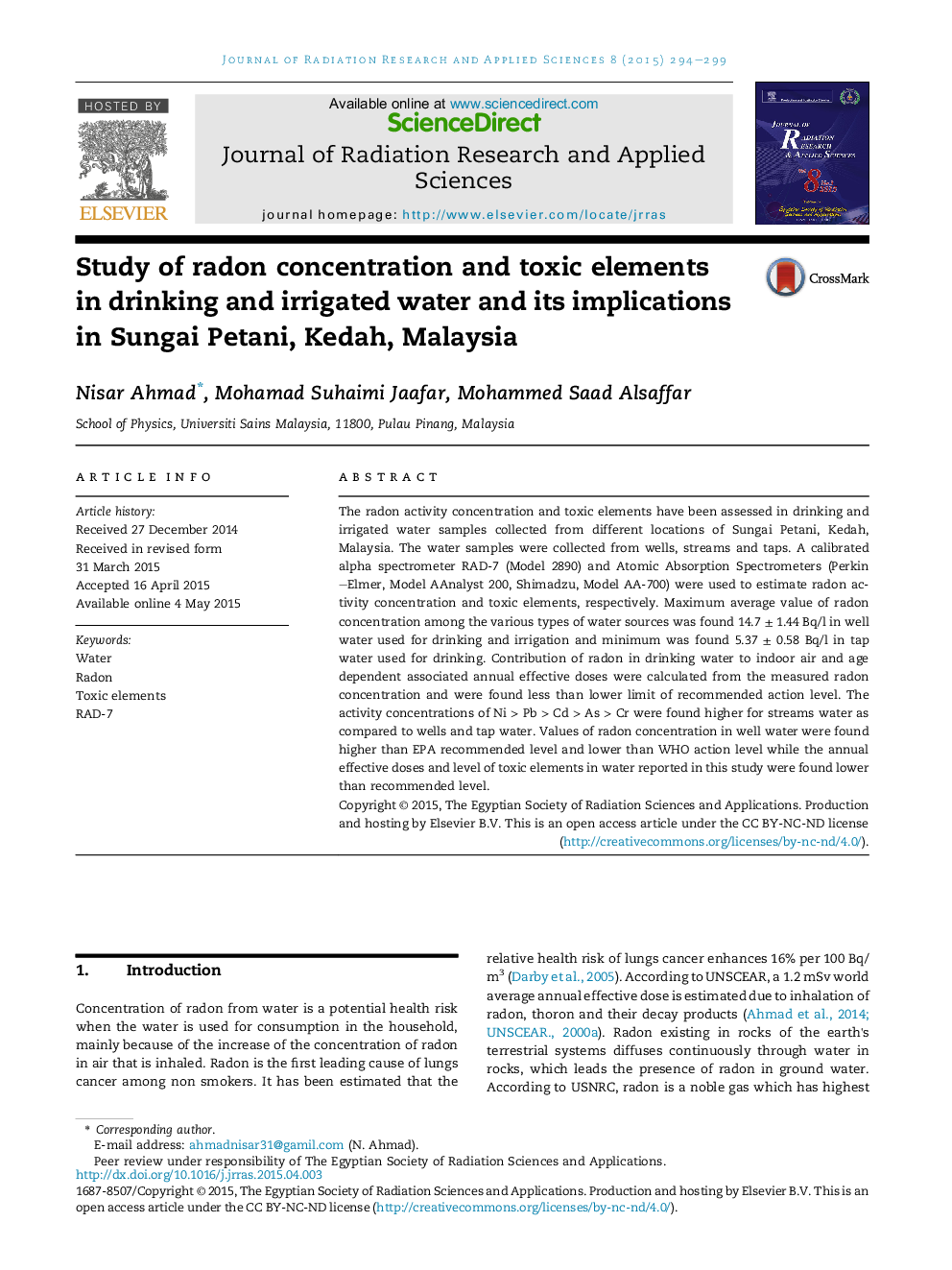| Article ID | Journal | Published Year | Pages | File Type |
|---|---|---|---|---|
| 1570453 | Journal of Radiation Research and Applied Sciences | 2015 | 6 Pages |
The radon activity concentration and toxic elements have been assessed in drinking and irrigated water samples collected from different locations of Sungai Petani, Kedah, Malaysia. The water samples were collected from wells, streams and taps. A calibrated alpha spectrometer RAD-7 (Model 2890) and Atomic Absorption Spectrometers (Perkin–Elmer, Model AAnalyst 200, Shimadzu, Model AA-700) were used to estimate radon activity concentration and toxic elements, respectively. Maximum average value of radon concentration among the various types of water sources was found 14.7 ± 1.44 Bq/l in well water used for drinking and irrigation and minimum was found 5.37 ± 0.58 Bq/l in tap water used for drinking. Contribution of radon in drinking water to indoor air and age dependent associated annual effective doses were calculated from the measured radon concentration and were found less than lower limit of recommended action level. The activity concentrations of Ni > Pb > Cd > As > Cr were found higher for streams water as compared to wells and tap water. Values of radon concentration in well water were found higher than EPA recommended level and lower than WHO action level while the annual effective doses and level of toxic elements in water reported in this study were found lower than recommended level.
